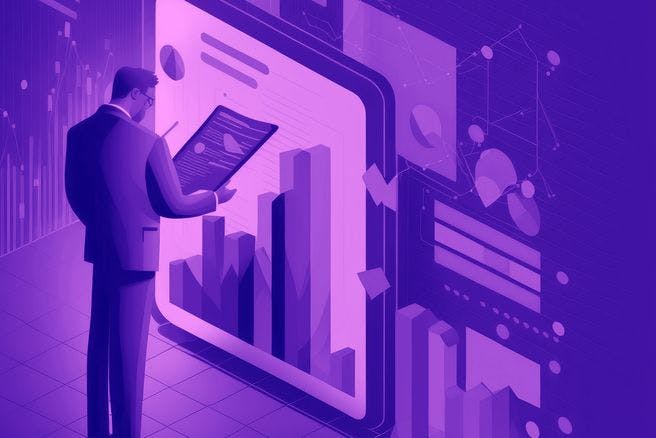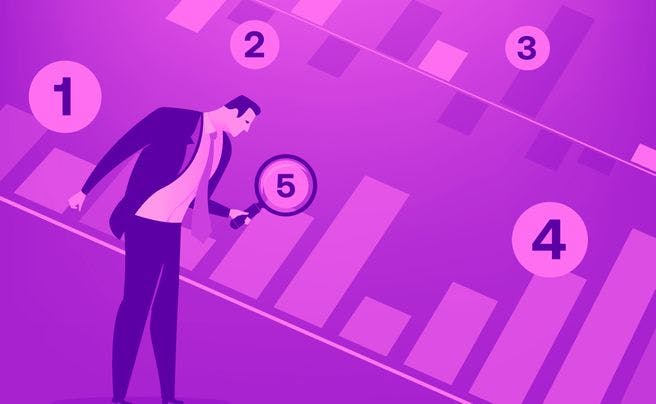But today, let’s focus on the “how” of this importance. Exactly how does a great CLM help your organization reap those benefits? What are some critical features to look for when assessing whether or not a solution has what it takes to reach your goals? And what are some quality of life signs that show your CLM is poised to help you get there?
If it all feels a bit overwhelming, rest assured, we did the research part for you. All you have to do is read on for a closer look at four indicators of a premiere CLM.
A Great CLM Should…
Empower Users to Make Smarter Decisions
A great CLM should be able to provide instant visibility across supplier contracts. What sets apart a truly good CLM from other methods of contract management is your files being easily searchable and accessible — gone are the days of sifting through a bottomless digital filing cabinet.
Quandary Consulting Group’s article, “Why You Need to Say NO to More Spreadsheets,” author Kevin Shuler dubs spreadsheets as data hoarders, stating various reasons why more updated technology is almost always the right way to go.
“Finding relevant spreadsheets and inputting the necessary details manually tends to be a hassle. Plus, employees add a different element to the mix. They often cut corners, letting information fall through the cracks,” Shuler writes. “As a result, you end up with an incomplete picture of your business and your customers [...] And that's data you’ll have to sort through. Other departments will have fractured, incomplete snapshots. Either way, it's a jumbled mess. And more work for you.” As we can see, using spreadsheets can be difficult to glean true information or conclusions from. Without clear or accurate data, making decisions for your business gets a lot harder than it needs to be. This is where having the right contract management software becomes critical.
As we can see, using spreadsheets can be difficult to glean true information or conclusions from. Without clear or accurate data, making decisions for your business gets a lot harder than it needs to be. This is where having the right contract management software becomes critical.
By centralizing siloed data across an organization's operations, leaders can make smarter decisions when it comes to rationalizing their portfolio or finding redundant services and software. Organizations can also drive greater efficiencies and cost savings, as well as mitigate risk. And when your CLM aids in your decision making, it doesn’t just optimize cost and waste — it provides you with the ability to reallocate that wasted spend on new innovative strategic projects instead.
A Great CLM Should…
Offer Automated Contract Renewal Tracking
Keeping on top of an organization’s contracts and vendor relationships can be (and often is) a full-time job. However, this important role is typically just one of many that procurement professionals are tasked with, and some things naturally fall by the wayside. The automation of contract renewal tracking should enhance the manual process with alerts and intelligence that increases the buying cycle speed.
Utilizing an effective CLM reduces the need for a designated employee to do the job — and ensures you won’t miss deadlines or negotiation windows. There’s infinite value in being able to give people enough time to renegotiate, get the right people to the table, and be able to optimize the value from these agreements. Basically, it’s an investment that yields significant dividends in a short amount of time.
Being proactive can result in serious cost savings, but it also improves your company’s employee experience. Without the added stress of managing contract renewal dates (especially within outdated platforms), your people can better focus their time on growing and maintaining supplier relationships, market research, and innovation. And while “improved workplace culture” might not be as tangible as a financial report, most would argue that it’s nearly as essential to an organization’s wellbeing.
A Great CLM Should…
Provide Spend Management Insights
Beyond contract management, contract renewal, and forecasting, a top-tier CLM helps its customers to effectively analyze their spend. After all, what good are the raw numbers if you can’t identify patterns and predictions from them?
Premiere CLMs provide intelligent insights to its customers by pulling together the spend data from multiple systems, such as ERP, finance systems, and procurement platforms. Such insights might include:
Supplier diversity
Redundant or wasted spend
Amount of spend generated by individual departments or business units
With this data at their fingertips, organizations can better stay on track and meet their budgets. From fiscal concerns to ESG initiatives, the right CLM can house contracts, spend insights, and ESG goals together in one solution.
A Great CLM Should…
Help Users Improve Their Data
For many organizations, data lives in various different silos. Email and spreadsheets are the most common ways that organizations manually gather data. We know these methods to be outdated, and it doesn’t help matters that as many as 88% of spreadsheets contain errors — leading to miscalculations in budgets, incorrect figures for reports, and general fiscal mayhem.
Offline contract management tools also completely ruin any hopes your team(s) may have regarding collaboration. If you use Google Sheets, there stands some chance (although we’ve all felt the frustration of having the exact cells you’re working on change before your very eyes), but if you’re using Microsoft Office, you’re basically forced into emailing the same Excel file back and forth for all of eternity.
Even Forbes agrees that Excel is often bad for business, citing the following reasons:
Loss of historical data
Difficulty sharing (i.e. the endless email thread)
Hidden important data
So while these localized, intranet-based platforms once served their purpose, we now know there are much better methods of organizing and tracking data. With the right CLM, an organization can gain insights into this scattered and often unorganized data.
Final Thoughts
As the old adage goes, knowledge is power — and there is a lot of knowledge lurking in your contracts and their millions of pieces of metadata. If your current contract management solution isn’t helping you make better decisions, providing spend management insights, helping you improve your data, or offering automated contract renewal tracking, then you are likely at a serious disadvantage.
Of course, there are other key indicators that set a great CLM apart from a poor or average one. And so often, “this is the way we’ve always done it” is the main reason companies continue to use suboptimal technology. When it comes to contract management, however, the costs of a weak CLM are just too great to ignore. So if your CLM isn’t actively improving your organization overall, consider finding a solution that will truly work for your goals and needs.




